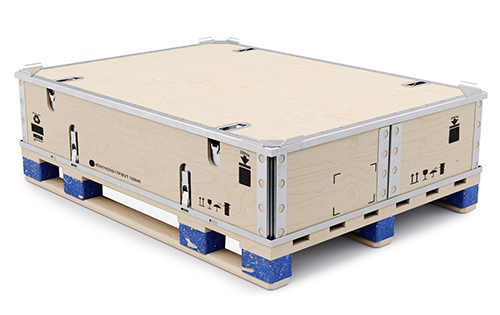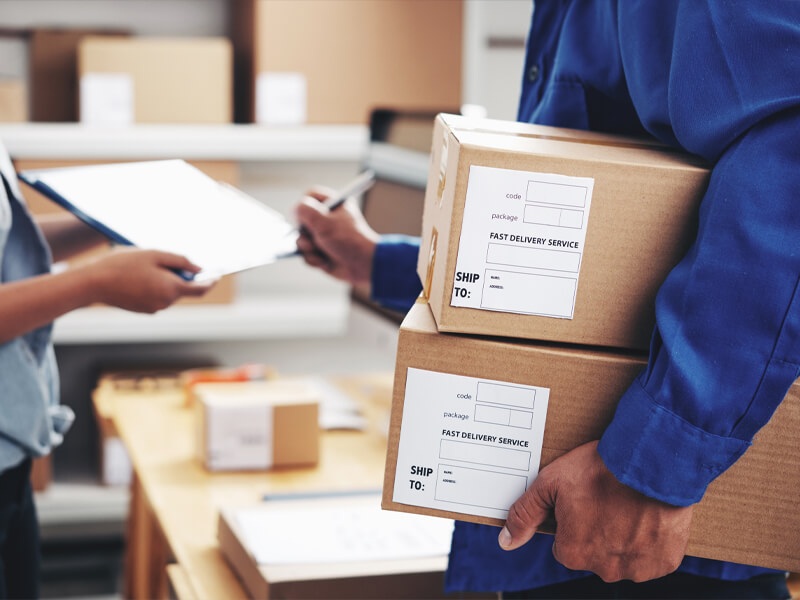Industrial Metal Packaging: Toughness and Sturdiness in Every Style
Industrial Metal Packaging: Toughness and Sturdiness in Every Style
Blog Article
Effective Industrial Recycling Solutions for Lasting Product Packaging: A Comprehensive Guide
In today's significantly environmentally-conscious world, the demand for sustainable packaging options has never ever been greater. To satisfy this need, services across industries are actively seeking reliable industrial recycling options. Nonetheless, browsing the complex landscape of sustainable product packaging can be testing without an extensive overview. That's where this extensive guide on effective industrial recycling remedies for lasting product packaging is available in. By checking out key locations such as product packaging product choice, creating for recyclability, implementing recycling facilities, collaborating with reusing partners, and monitoring and gauging reusing success, this guide will furnish you with the expertise and tools essential to make educated decisions and drive favorable modification within your organization. Whether you're a product packaging specialist, sustainability manager, or just interested in the subject, this guide will certainly offer valuable insights and methods to assist you navigate the globe of lasting product packaging.
Product Packaging Material Choice
The option of product packaging materials plays a crucial duty in ensuring the sustainability of commercial recycling solutions. When it involves sustainable product packaging, the selection of products is essential in lessening environmental impact and maximizing reusing performance. Selecting the ideal materials can help in reducing waste generation, conserve sources, and promote a round economic situation.
Materials like cardboard, paper, glass, and certain kinds of plastics can be recycled numerous times without shedding their quality. On the various other hand, materials that are difficult to reuse, such as non-recyclable composites or blended plastics, can develop challenges for the recycling procedure and might end up in burners or landfills.
One more factor to consider is the usage of eco-friendly and eco-friendly materials. Product packaging made from sustainable sources, such as plant-based plastics or biopolymers, can aid decrease dependence on nonrenewable fuel sources and reduce environment modification. In addition, naturally degradable materials break down naturally in time, lowering the buildup of waste in land fills.
Additionally, the weight and volume of packaging materials need to be decreased to lower transportation costs and energy consumption. Light-weight products not only require fewer resources during production yet also contribute to lower carbon exhausts throughout transportation.
Creating for Recyclability
In order to ensure the recyclability of packaging materials, thoughtful design is essential. Creating for recyclability entails creating packaging that can be conveniently sorted, separated, and refined in reusing centers. One vital aspect of designing for recyclability is the selection of products. Packaging developers ought to focus on the use of materials that are widely approved for reusing and have established recycling infrastructures. Materials such as glass, light weight aluminum, and particular kinds of plastic, like PET and HDPE, are commonly reused and must be favored over products that are pricey or tough to reuse.
One more important factor to consider in creating for recyclability is the removal of unneeded elements or materials. By minimizing the variety of layers, coverings, and additional elements, packaging can be made simpler and simpler to recycle. Furthermore, designers should intend to decrease making use of blended materials, as they can make complex the recycling procedure.

Implementing Recycling Framework
Reliable implementation of recycling infrastructure is crucial for the success of commercial reusing solutions. Without correct facilities in position, the recycling process becomes ineffective and ineffective, preventing the total objective of lasting product packaging.
To implement recycling framework efficiently, a number of vital factors require to be thought about. There must Click This Link be a well-organized collection system that helps with the splitting up and collection of recyclable products. This can include marked reusing containers in public spaces, as well as collaborations with waste monitoring business for curbside pickup and sorting.
As soon as accumulated, the recyclable products require to be carried to reusing facilities in a timely way. This needs reliable logistics and transport networks, making sure that the products get to the ideal facilities without hold-up.
At the reusing facilities, progressed sorting and processing technologies should be in location to divide various kinds of products effectively. This consists of making use of automated arranging machines, optical scanners, and hands-on sorting techniques.
Additionally, there ought to be a robust market demand for recycled materials. This can be achieved with collaborations with suppliers and markets that use recycled products in their manufacturing processes. Developing a steady market for recycled materials incentivizes the recycling industry and advertises the circular economy.
Collaborating With Recycling Partners

One find out this here key aspect of collaborating with recycling partners is the establishment of clear interaction channels. It is vital to establish open lines of interaction to facilitate the exchange of info, updates, and feedback. This enables both events to remain informed concerning the progress of recycling efforts and deal with any kind of challenges or concerns that may develop.
Additionally, partnership can involve collaborations in executing and designing recycling programs. Reusing partners can provide useful insights and assistance in establishing reliable collection systems and establishing one of the most proper recycling innovations. By interacting, companies and recycling companions can enhance the reusing process and decrease waste.
Moreover, partnership can expand past the operational elements of recycling. It can additionally include campaigning for and education and learning efforts. By joining pressures, businesses and reusing companions can increase awareness about the value of reusing and advertise the fostering of lasting packaging practices among customers and various other stakeholders.
Tracking and Measuring Recycling Success
To ensure the performance of commercial reusing services and the success of lasting packaging objectives, it is vital for organizations and their reusing partners to develop a thorough system for tracking and measuring reusing success (bulk container recycling). Determining and tracking reusing success enables companies to evaluate the impact of their recycling initiatives, recognize areas for this link improvement, and established significant targets for future progress
One means to track reusing success is through making use of data collection and evaluation devices. By collecting data on the quantity of product packaging waste created, the percent of waste that is reused, and the kinds of products being reused, businesses can acquire beneficial insights right into their recycling performance. This data can then be analyzed to identify trends, patterns, and areas of inefficiency.
One more important aspect of tracking and determining recycling success is establishing clear and standardized metrics. This allows organizations to compare their performance versus industry standards and track their progress in time. Metrics such as reusing prices, waste diversion rates, and greenhouse gas emissions can give a quantitative procedure of an organization's reusing success.

Conclusion
In verdict, executing efficient industrial recycling options for sustainable product packaging calls for cautious consideration of product packaging material option, developing for recyclability, implementing recycling framework, teaming up with recycling companions, and tracking and determining recycling success. By integrating these practices, organizations can add to an extra lasting and environmentally-friendly technique to packaging, lowering waste and advertising the round economic climate.
By discovering essential locations such as packaging product selection, designing for recyclability, implementing reusing framework, working together with reusing partners, and monitoring and determining reusing success, this overview will furnish you with the knowledge and tools needed to make educated decisions and drive favorable adjustment within your company. Product packaging designers ought to focus on the use of products that are extensively approved for reusing and have actually established reusing infrastructures.Partnership with reusing partners is essential for the successful execution of commercial reusing solutions and the achievement of lasting packaging objectives. By joining forces, services and reusing partners can elevate awareness about the importance of recycling and advertise the adoption of sustainable packaging techniques amongst consumers and other stakeholders.
By accumulating information on the quantity of product packaging waste created, the percent of waste that is reused, and the types of materials being reused, companies can get beneficial insights right into their recycling efficiency.
Report this page